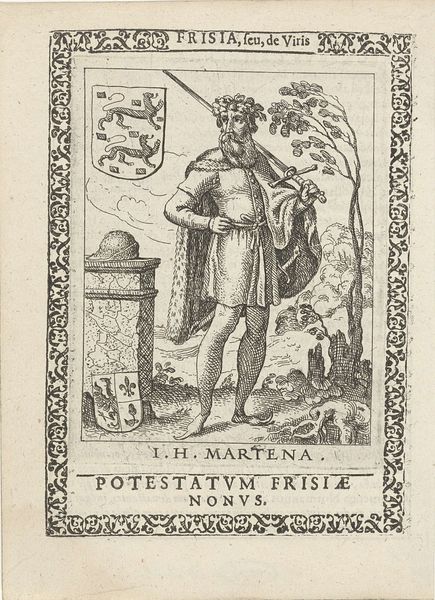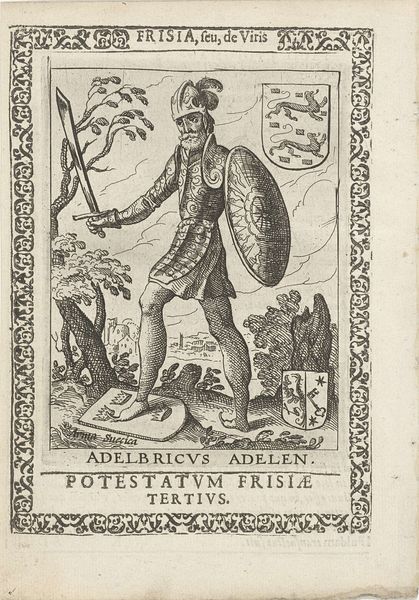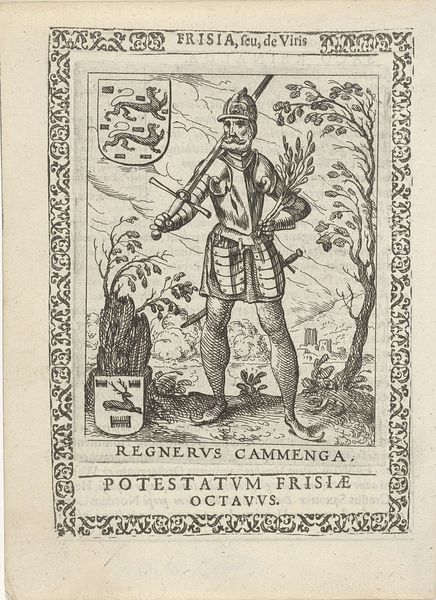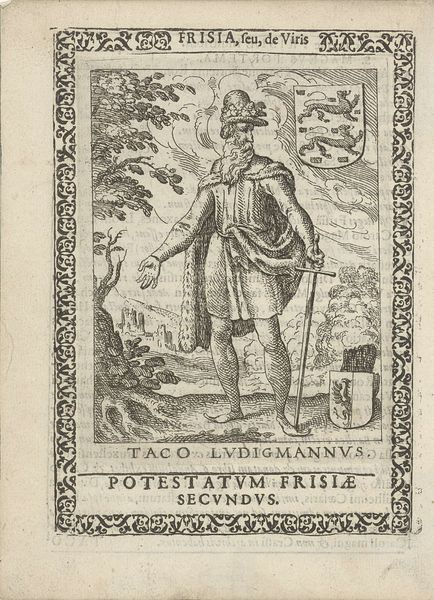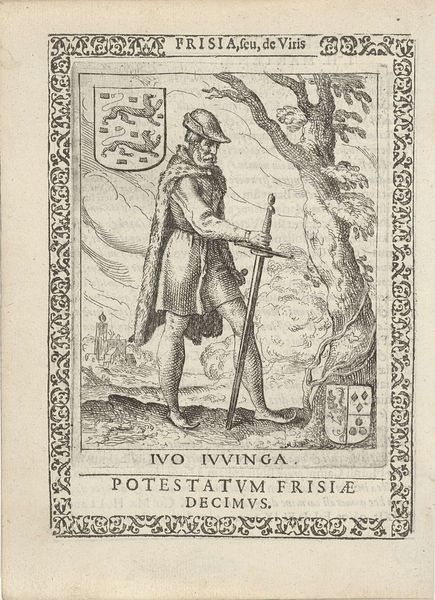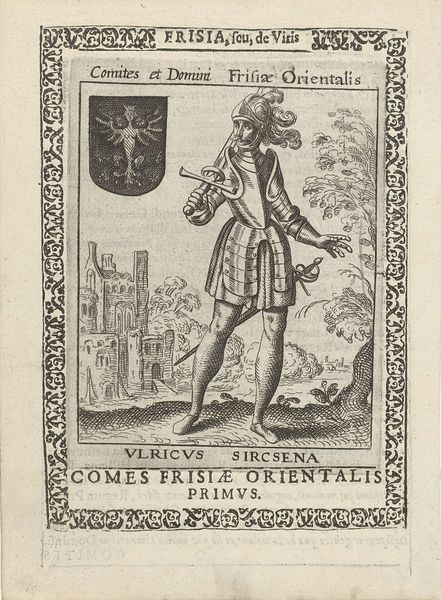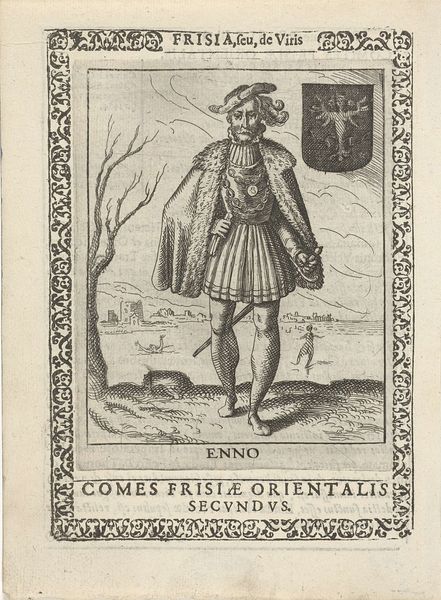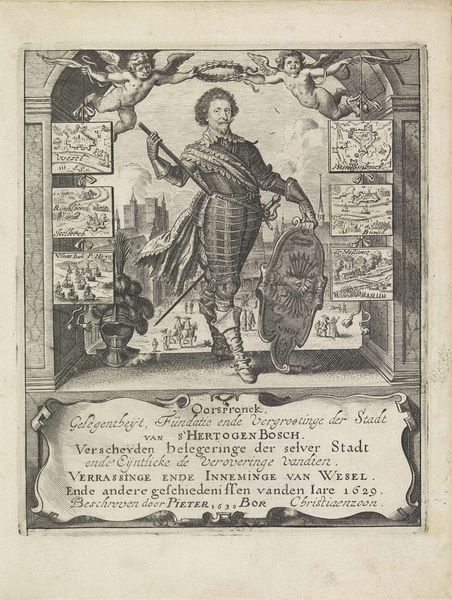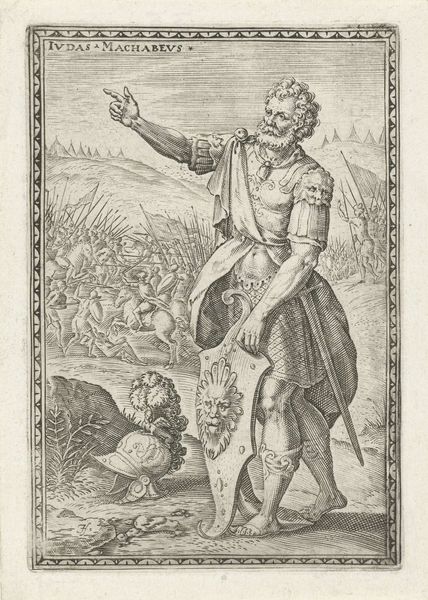
print, engraving
#
portrait
#
medieval
# print
#
figuration
#
line
#
history-painting
#
northern-renaissance
#
engraving
#
realism
Dimensions: height 125 mm, width 100 mm, height 158 mm, width 115 mm
Copyright: Rijks Museum: Open Domain
Curator: Here we have a print from between 1618 and 1620, attributed to Pieter Feddes van Harlingen: Igo Galema, fifth Potestaat of Friesland. Editor: Striking! The figure is rendered with such directness, a powerful sense of presence emerges, despite the clear linear nature of the engraving. And what's with the stork? Curator: Let’s delve into the making of this image. Feddes van Harlingen, a notable figure in the Northern Renaissance printmaking scene, employed engraving to depict Igo Galema. The texture achieved through these lines gives the piece a unique dimensionality. Consider also, that prints such as this, had great importance at the time in the spreading of information about rulers and important individuals. Editor: I’m fascinated by the formal elements at play here. Notice the carefully constructed composition, balancing Galema with the stork. The linear patterns create visual interest, and the heraldic devices add another layer of meaning, a type of visual syntax offering insight into identity and power. It's a feast for the eyes in its detail and construction. Curator: And not to forget the cultural context! Galema, though a figure shrouded in myth, represented Frisian identity and resistance. The print served as a vehicle for asserting Frisian history, designed to appeal to the local population of Friesland. The choice to depict him with certain symbolic elements reveals conscious construction of an image of regional heroism. Editor: I agree. Thinking about his pose and gaze, so strong and fixed—everything reinforces the statement about leadership. The detail in his attire is exquisite. One almost feels you could decode his persona layer by layer, by analyzing the lines of his clothes. Curator: Prints like this also functioned within a market; available for purchase by people invested in the visual articulation of Friesland history. We should think of it less like fine art, and more like proto-propaganda in pictorial form. Editor: Looking closely at the stark contrast between light and shadow created by the engravings really enhances that feeling of an imposing, strong, heroic character. A figure worthy of this treatment. It definitely adds to the aesthetic impact. Curator: Thinking about its afterlife, seeing this today at the Rijksmuseum really emphasizes how print media was instrumental to constructing regional and national narratives in the early modern period. Editor: Indeed, I leave with a deep appreciation for how its aesthetic precision elevates this simple composition into something much more compelling and memorable.
Comments
No comments
Be the first to comment and join the conversation on the ultimate creative platform.
